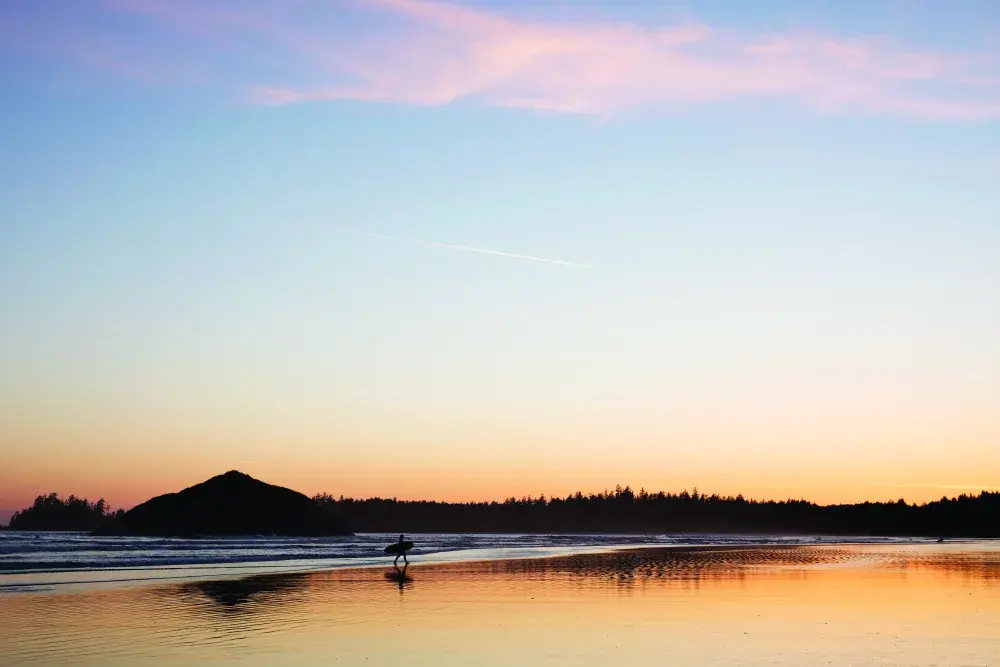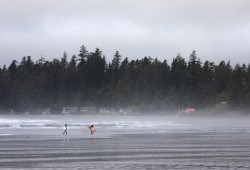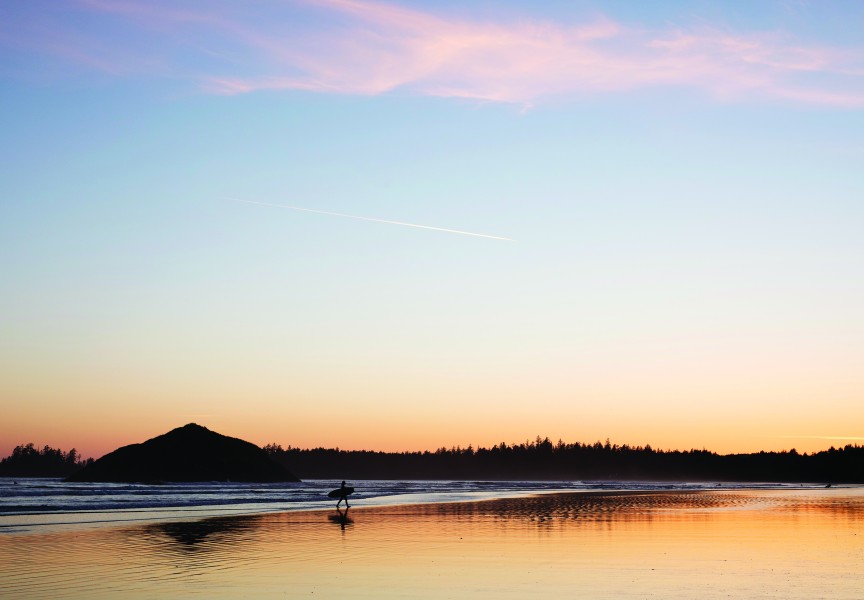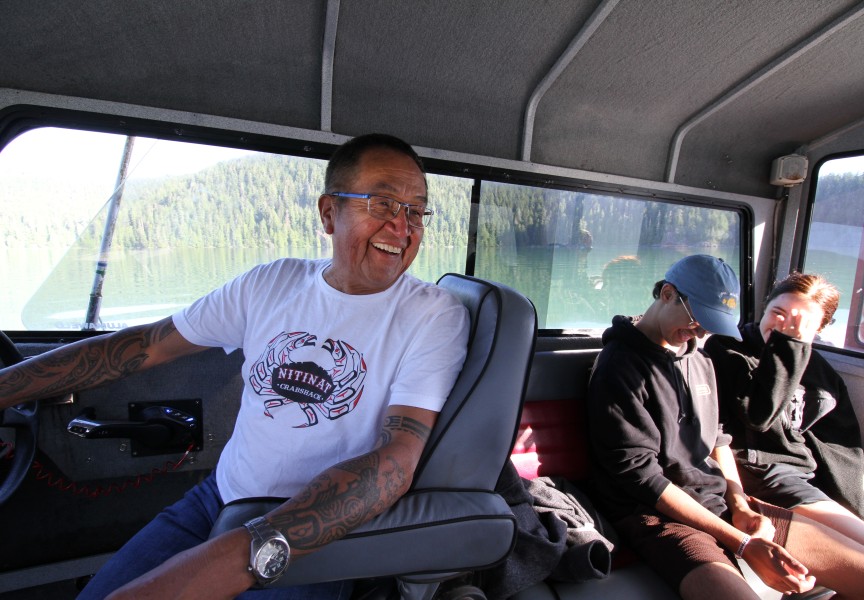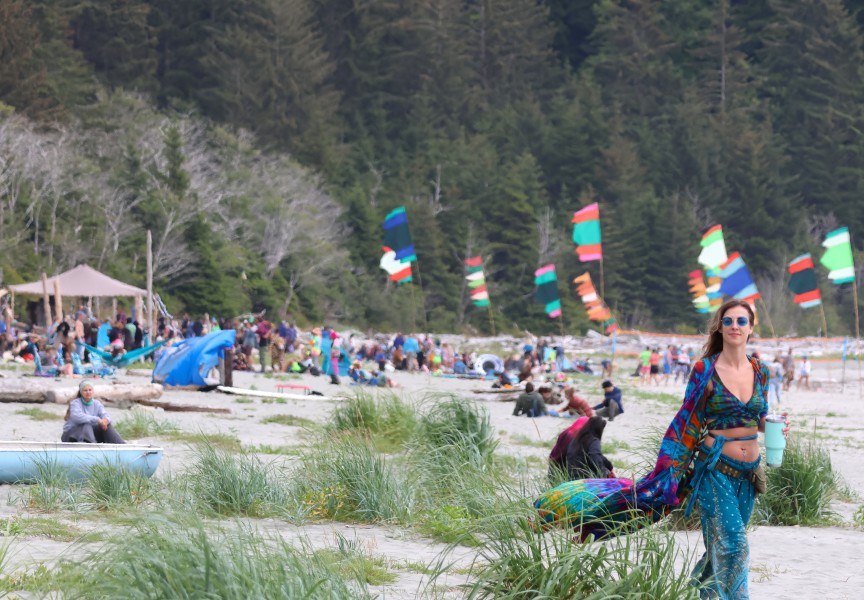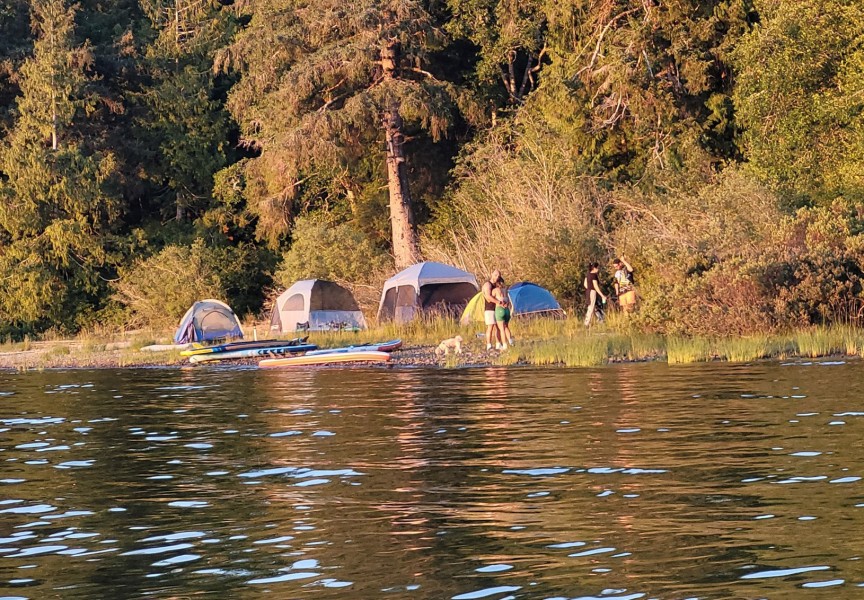Tofino is known internationally for its stunning sandy beaches, surfable waves, old growth rainforests, and abundant wildlife, luring in surfers, transient workers, and thousands to millions of visitors each year. Home to Tla-o-qui-aht First Nation, the industry has both provided benefits and concerns for the community.
“I think that when you're living in a tourism industry area, of course our cost of living is going to be higher because we want to charge more for tourists,” said Elmer Frank, elected chief councilor of Tla-o-qui-aht. “It's unfortunate that us as locals have to suffer those costs.”
In an email to Ha-Shilth-Sa, Justin Wiltshire, assistant professor in the economics department of the University of Victoria, shared that “any notable tourism boom is likely to drive up local prices”.
“My suspicion is that the tourism boom initially benefited local[s] in Tofino, providing more economic opportunities and amenities,” wrote Wiltshire. “But as Tofino became increasingly popular, house prices and rents began rising faster than wages, making things more unaffordable.”
The professor noted that the tourism boom has benefited locals who invested in land that has risen in value, but renters and some property owners who needed to live on their land have found themselves falling behind.
“Of course, if this is a very large and sustained increase in tourism in a place that also draws transient labor (e.g. out-of-town surfers who also take jobs to pay the bills), then housing demand also increases, which can drive up rents,” wrote Wiltshire. “In places where there aren't extra construction workers or where land is scarce… it can be a lot more difficult to build new housing, and so rents can increase much more sharply.”
According to Clayoquot Biosphere Trusts’ 2023 Vital Signs report, the west coast region is now home to 7,626 residents, which has grown from 4,804 since 2006 and from 6,808 in the last two years.
Throughout the Clayoquot region, there are over 682 listings on AirBnB, reads the report. In 2022, it was reported that a monthly average of four one-bedroom, less than one two-bedroom, and one three-bedroom longer term rentals was available in Ucluelet and Tofino.
According to the Vital Signs report, in 2021-22, the Long Beach unit of Pacific Rim National Park saw 1.2 million visitors, increasing from under 800,000 in 2013.
“The largest impact comes from unmanaged aspects of tourism,” said Saya Masso, lands director for the Tla-o-qui-aht Tribal Parks Guardian Program. “When tourism can be managed and guided to the trails that you want them to and there's good guide outfitters that are educating the tourists on respectful use of the tribal parks, those usually minimize and have minimal impact.”
But for Tribal Park Guardians, issues with affordable housing and the lack of available campgrounds has caused an increase of people living in their cars or camping in the backcountry.
“Tourism, at least in Tofino, comes with an affordable housing issue, which then comes with illegal dumping and illegal camping,” said Masso.
“I think it's got much less of an impact in our territory than straight up resource extraction,” said Gisele Martin, who grew up working in tourism. “But tourism also can have huge impacts so there's a lot that needs to be done to mitigate that.”
“The cost on our traditional foods is something that hasn't been factored in,” Martin said.
The areas where Martin’s uncle used to hunt for duck and deer and dig for clams are now occupied by float homes.
“We can't hunt there because people are living there,” said Martin. “This is the area where we're from, this is where we're supposed to be duck hunting or clam digging or picking berries.”
“Tourism has certainly had an impact on our community and our people,” said Jim Chisholm, Tla-o-qui-aht tribal administrator. “It's been very good in a lot of ways, and in some ways, it's got some concerns for us.”
For Tla-o-qui-aht, they own and operate Best Western Tin Wis Resort, which has maintained high occupancy rates through the 2023 off season, and Tsawaak RV resort and campground, offering competitive rates for long-term stays for locals through the off season, reads a December project report.
“Tourism provides employment for a lot of our members, whether it's in our facilities or in other hotels, or restaurants or stores,” said Chisholm.
“You can see and you can feel how much this town [is] driven by tourism in our traditional territory,” said Frank. “You can see that because the fire at Cameron Lake and the road closures that happened during that time affected Tofino significantly.”
Frank shared that restaurants were closing and laying off its employees.
But for Frank, in terms of economic benefit in the region, he shared that Tla-o-qui-aht is “being left behind as First Nations”.
“We should be one of the first and foremost benefiting from our hahoulthee, our traditional territories,” said Frank.
“Our nation has to learn to participate more in the economy of this area, in other words of tourism,” said Chisholm. “We're not directly major players in the tourist industry out here. Parks Canada are, merchants in Tofino are, but [for] us, it's a lesser extent, and things we want to do in the future is… we want to be bigger players in the tourist industry out here.”

